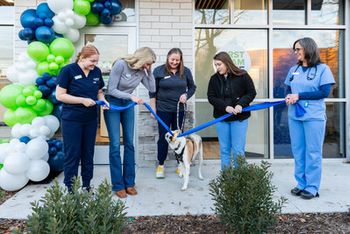
- Hospital Design360 August 2022
- Volume 3
- Issue 1
- Pages: 12
Establishing a strong framework
Identifying organizational goals defines a clear path for a practice and lays a solid foundation for design conversations
A mission, vision, and set of core values weave together to create a strong framework for any organization or business. By defining their view of these 3 concepts, a practice can identify a purposeful path forward. With all your staff focused on the same point on the horizon, they can excel at their positions because they understand the contributions they are making to the practice’s goals. This momentum can invigorate everyone and ultimately enhance the care you provide, which benefits your patients and clients.
Mission is a practice’s No. 1 goal
The inception of many veterinary hospitals starts with a unique driving force or passion that propels the owners to take the risks required to establish a practice. This underlying objective often gets lost in the day-to-day grind or covered up by a long, successful history. Identifying the core mission of any practice can bring the team back to a clear direction.
From a design perspective, one way to keep the focus on your mission is to put it on a statement wall. Painting a fun graphic with the mission, or etching it onto glass or metal, adds visual interest to your space and remind clients and staff every day of the practice’s purpose.
Vision is your dream for the future of your practice
The vision is where the butterflies live. When you think about the future, a dream ideal, what does that look like for your practice? Once you feel those butterflies in your stomach, you’re usually on the right path. The mission articulates the purpose of the practice, but the vision opens the exciting possibilities to come if everyone stays focused on the same goals.
A fun way to incorporate your vision into the physical design of your practice is with artwork. If your vision is to create an enjoyable, approachable environment for your staff, clients, and patients, show it with the pieces you choose for your walls.
Maybe your vision is to train the next generation of veterinarians. You could make the treatment space transparent and open to the rest of facility so that staff, students, and visitors can observe the work firsthand. You also could incorporate a space within your hospital to host trainings and lectures.
Core values are beliefs and ideals that pave the way
The core values are where the personality of your practice can shine. Does everyone love to have fun at the hospital? Is the team adaptable? Are you dedicated to helping everyone have a fulfilling work/life balance? Identify 3 to 7 core values and start shaping the culture of your practice.
Once the core values are established and communicated to the team, they can be utilized throughout your practice, such as in the employee review process, interview process, daily workflow strategies, and hospital design.
If creating low-stress environments for animals and individuals is a core value, make sure your exam rooms are large enough to be comfortable for floor exams and provide space to separate species as much as possible. Good communication might be a core value. This could be achieved by dedicating multiple surfaces to screens that provide live statistics on patients, available exam rooms, or staff on the shift.
If the culture is focused on supporting staff, explore ways to make the staff areas functional and comfortable. Do the doctors need a private, quiet location to make calls? Does the staff need a relaxing place to decompress after a stressful situation? Explore how to create the right spaces for your staff so they can be at their best.
Bring those core values to your architect so they can be integrated into the aesthetics, space planning, and technology of your building. If the hospital embraces your core values, it will be easier for the staff to pick up on them and in turn endorse the culture and your vision.
Maybe one of your core values is to push past current norms. We are seeing teams provide outdoor exam spaces as a supplemental clinical area. If you are exploring new techniques or procedures and this is a practice goal, plan spaces for these activities. If your techniques are always morphing, focus on flexibility. Room dividers, moveable casework, and casters for caging are all options for keeping rooms flexible based on current use.
Conclusion
In the end, it comes down to your organizational goals. By identifying your mission, vision, and core values, you will have a clear path for your practice and a solid foundation for your design conversations. Starting the process with these important concepts will allow your design team to get creative with the aesthetic, programming, and flow. Your hospital then can support the concepts that drive, motivate, and invigorate your day-to-day operations.
Articles in this issue
over 3 years ago
Facility design can reduce stress, enhance healingover 3 years ago
Total project budgetingover 3 years ago
Building a hospital: A jigsaw puzzle with more than 1 solutionover 3 years ago
AAHA expands care standards to AsiaNewsletter
From exam room tips to practice management insights, get trusted veterinary news delivered straight to your inbox—subscribe to dvm360.




